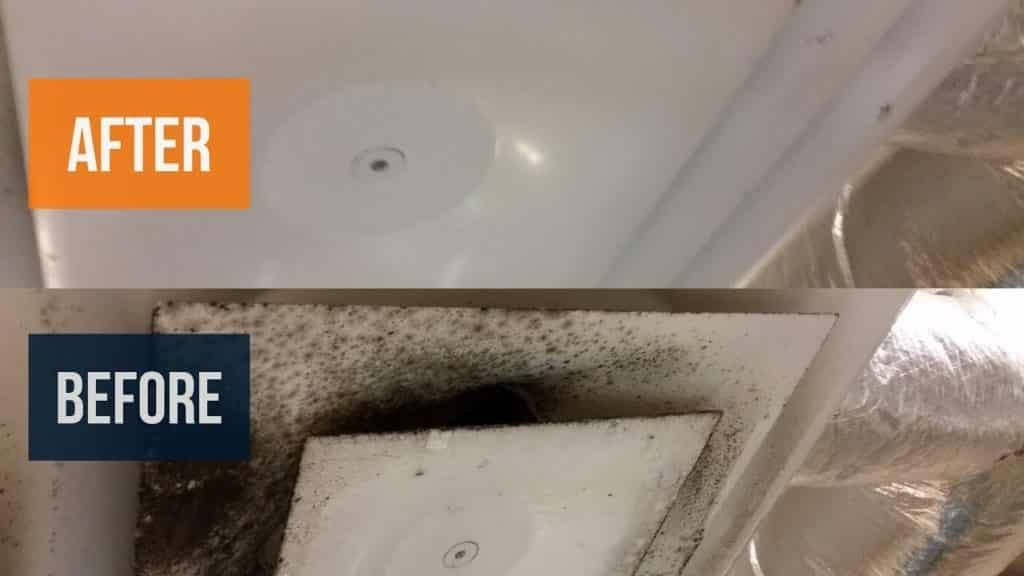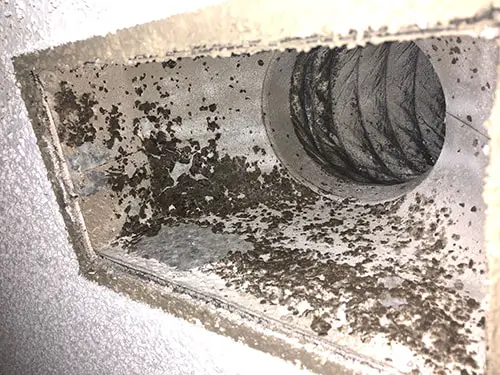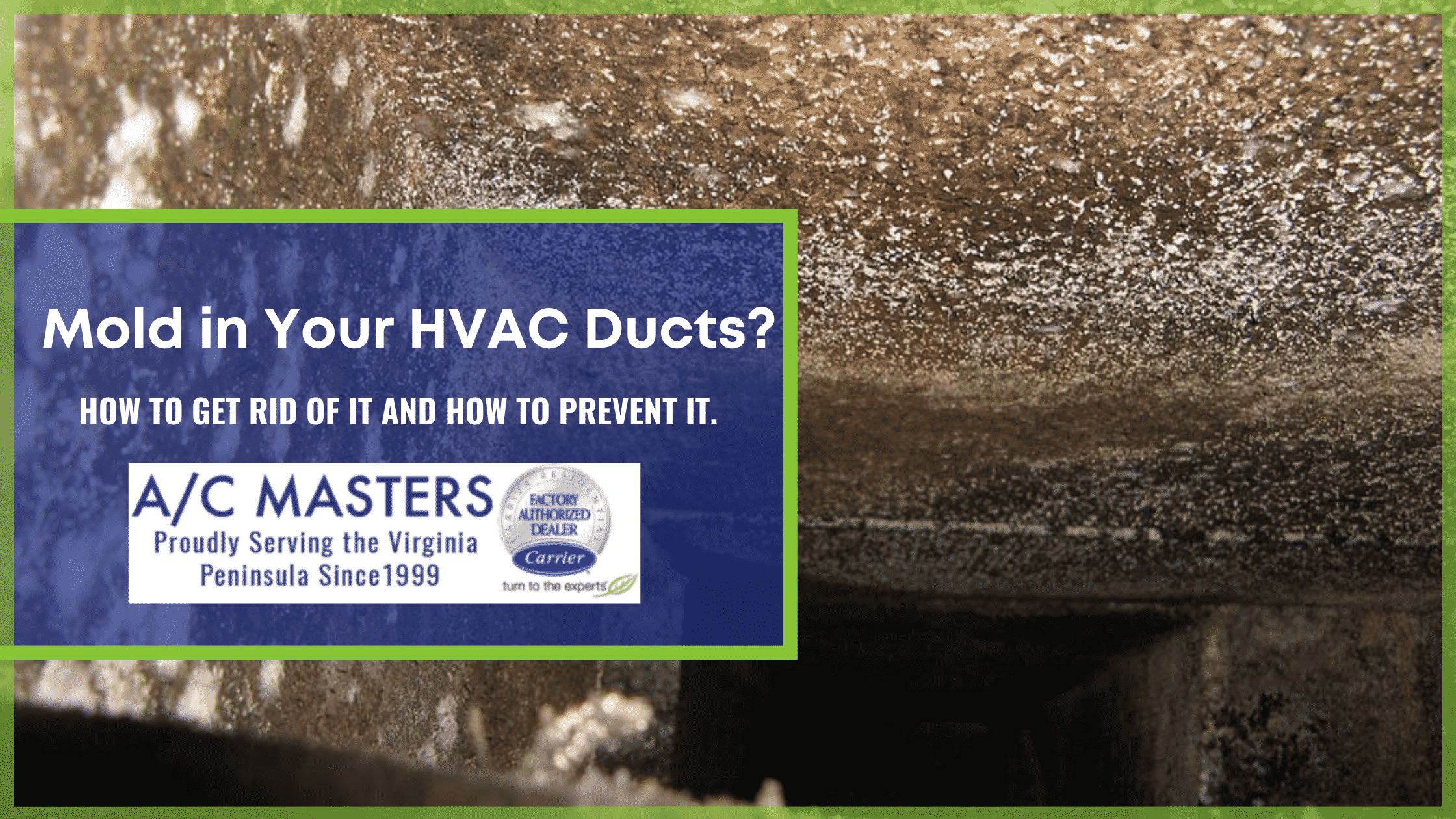Will Lysol Kill Mold
Lysol does have disinfecting products, including their mold and mildew remover spray. It eliminates mold and mildew stains, bleaches surfaces and kills 99.9 percent of viruses and bacteria.
However, this product is intended for bathroom surfaces, so use on air vents at your own risk. The manufacturer does state that prolonged contact with surfaces made from metal, old porcelain or plastic laminate can lead to discoloration.
You can try other Lysol products, such as a disinfectant spray. But these are intended to prevent mold and mildew, rather than kill it. It is better for odor, bacteria and viruses than anything else.
What Conditions Lead To Mold Growth
There are a few conditions that promote mold growth. Mold grows best between 77 and 86 degrees Fahrenheit, which is the temperature your air ducts are at when your home is being heated. It thrives in damp conditions and needs oxygen. It also needs food, which it has access to in your air ducts. Mold may make you feel nauseous or fatigued and can also cause or contribute to allergy symptoms.
Your Air Conditioning System Is A Breeding Ground For Black Mold
Unfortunately, your air conditioning system and your air ducts are a common place for black mold to reside. Moisture plays a significant role in the growth of mold. Your air conditioning system can act as an incubator for black mold because of its constant change in humidity levels throughout the summer season. If your air conditioner works as a dual heater as well, then it increases the likelihood of having a mold infestation at some point in time due to constant usage.
If you do have mold in your home and you use your air conditioning system, the effect can be the air conditioner moving the mold spores into your ductwork through the air, with those mold spores getting lodged into your air ducts. Once they make their way to your air ducts they will have a non-visible environment to grow.
Don’t Miss: How To Get Mold Out Of Boat Seats
How Do I Know If I Have Mold In Vents
You may be able to physically see mold spores growing inside your HVAC air ducts. Take the vent cover off and visually inspect the inside of your vent with a flashlight. Look for dark black dots.
The other telltale sign of mold is a musty, damp smell that may become stronger when your air conditioner or furnace is turned on.
What Causes Black Mold In Air Vents And Ducts

Mold in air ducts most commonly occurs when there is moisture inside the ductwork. As cool air flows through the vents on hot days, the moisture in the air can condense inside the air vent. You can see the same principle at work when you drink an icy beverage, and water beads up on the outside of the glass. When moisture is present, mold can flourish inside vents. The mildew can be introduced into the vents in several ways.
Mold spores are generally air borne, or spread through air. Spores can enter the duct work by simply blowing in from another area of the home, or from outside. The conditions need to be right for the spores to develop, however. A single mould spore can blow inside your home and begin to develop into a colony if the conditions are right. Warmer, moist environments are ideal for mildew spores to grow.
Don’t Miss: How To Get Rid Of Mold On Ceiling In Bathroom
Your Local Hvac Specialist
A mold infestation can be a serious health problem for your family, but its also preventable. Be sure to have your system checked so that your concerns can be addressed right away. Let us help you protect your family and keep your HVAC system running cleanly. Request an estimate or call AQM in Exton, Pennsylvania at
Will Air Duct Cleaning Prevent Mold In My A/c
Air duct cleaning is a great way to remove dust from your HVAC system in order to minimize the chance of mold growing inside. And if you already have mold, duct cleaning will remove the mold from your central air conditioner.
Air duct cleaning is the process of connecting a heavy duty vacuum to the air ducts. The large vacuum is sometimes outside as part of a truck, or it may be a portable vacuum inside.
A large diameter hose, such as 12″, is connected to a return duct — and then the ducts are cleaned using compressed air tools or brushes. When the vacuum is turned on, it creates a significant negative pressure in the duct system, so that when dust is loosened within the ducts — it all gets sucked to the vacuum.
If you have your air ducts cleaned, it is important that they also clean your indoor air handler or furnace. This is the central area where all the air in the home goes through, this is also usually where your filter is located . It is important to clean the blower fan, the evaporator coil, the furnace housing — the whole unit.
Almost always, if I find mold in a house, it is usually at the indoor air handler.
Recommended Reading: Cleaning Mold Off Leather Jackets
Why Do I Have Mold In My Vents
It can get humid inside your vents, which is the perfect environment for mold spores to grow. Vents in rooms that arent well-ventilated are the most susceptible to mold.
Air conditioners are another culprit. If theyre too big, excess moisture in the air vents doesnt circulate properly. And if you keep the temperature too low, expect condensation to form due to the temperature difference.
Install An Air Purification System
Installing an air purification system can be a great way to help prevent mold in air ducts and reduce the frequency of cleaning required.
Air purifiers work by drawing air through filters which trap tiny airborne particles including dust, smoke and mold spores. Cleaner, fresher, better smelling air is then circulated around the room. This can also have a big impact for any allergy sufferers.
Don’t Miss: How To Clean Mold Between Pavers
How Can You Prevent Mold Growth In The Ac System
Its not 100% preventable, but with a few simple measures you can cut down the risk of mold developing in your HVAC system. Especially if you have had reoccurring problems with mold at your house, you will want to take these steps to protect your system. Here are some expert tips:
Get some helpful Tips for Dealing with Allergies.
Where Does Mold Grow In Heating & Cooling Systems
There are three primary locations where mold growth typically occurs in HVAC systems: the air conditioners indoor unit, the drain pan, and the ductwork. These locations can foster mold growth by providing the spores what they need: moisture, food, and warmth. Food for mold can be something as simple as dust, which is why it can pay to keep your system clean.
You May Like: Mold On Plastic Cutting Board
How To Eliminate Mold
Mold cannot grow in environments that lack moisture. If you get rid of the moisture, youll keep the mold from growing. In HVAC systems, moisture occurs due to the mixing of hot and cold temperatures. Its the same reason cold beverages sweat and create condensation. The difference between the two situations is that condensation on air conditioners happens for a long time.
When looking for causes and cures for mold growth, you should ask two primary questions:
How Mold Enters An Air Duct

Mold typically enters an air duct system any time steady amounts of water or condensation are present in the vents. If an air conditioning unit is infected with a strain of mold, oftentimes it will spread from the air conditioning unit throughout the air duct system. If there is a low spot in your ducts where moisture can pool, then you can bet that mold will eventually be attracted to it. Think about your air ducts, they are the perfect spot for mold to thrive without being stopped, it’s dark, untouched, and if it’s there, it’s growing off the whatever moisture is still occurring.
The best way to prevent mold from growing inside of your air ducts is to keep the ducts as dry as possible and have them regularly cleaned and checked by experienced technicians so that dirt, grime, and other water trapping substances are not present within the airways.
You May Like: Can Black Mold Cause Asthma
S To Remove Mold From Heating And Ac System
If you are looking at the moldy spots near your vents with frustration, here is how you can channel that rage toward tackling that nasty infestation.
First, remember that mold can be dangerous. You need to don the proper PPE when handling mold problems.
This means:
- Industrial grade gloves
- Safety goggles
You may even want to invest in a painters suit that you can dispose of after finishing. Next come the tools of the trade. Keep in mind: whatever you use to clean mold, you will need to throw it away. If you dont, you could be inviting mold right back into your home.
You will want a soft brush and some rags to do the dirty work. You can use a few cleaning solutions to tackle mold. The first is a home remedy.
- One tablespoon household detergent
- Half tablespoon baking soda
Invest In A Dehumidifier
The battle against humidity can be a constant war, which is why buying a whole-home dehumidifier is the perfect battle tactic. Dehumidifiers are the ultimate weapon against excess moisture and can help prevent any mold from creeping into your home.
Small portable dehumidifiers can only take out the humidity in one area. Still, a whole-home unit works with your HVAC system to help control the moisture throughout your entire home.
Also Check: How To Test For Mold Toxicity In Blood
S To Prevent Mold Problems In Your Hvac System And Air Ducts
Unfortunately, mold is all around us. Its in the air we breathe and resting on all our home surfaces. Add a bit of moisture, and youve got fuzzy green or black spots staring you down. Plenty of areas around your home are bastions for mold growth. Your HVAC system, unfortunately, is one of those perfect spawning grounds for stubborn molds.
If you want to learn more about combating mold in your HVAC system, weve got the strategies you need. Read on for more information.
Are you still struggling with mold issues and looking for quality Sterling HVAC repair? Cardinal Plumbing, Cooling and Heating has the HVAC experts you need to tackle even the most stubborn HVAC problems. Give us a call at 703-645-4528.
How Does Mold Form In Air Ducts
Mold thrives in humid environments with excess moisture, and it also helps if it has an organic food source. As such, if theres water vapor in your air ducts, then mold may form inside, using dirt, dust, and other debris as its food source. Water vapor can develop when cool air passes through the system and ducts and if water vapor outside of the ducts forms water droplets.
You May Like: How To Get Rid Of Mildew On Boat Seats
What Does It Mean When Condensation Forms On Your Air Ducts
Even the most efficient air conditioners create some condensation. As your HVAC system pushes cool air through the ducts, they get cold.
The temperature in your attic or crawl space is usually much warmer than the ducts when the cold surface touches the warm air, duct condensation forms.
If your system is running efficiently, you should not see much condensation. If there is an excessive amount of water on your ducts, it could be a sign of:
- Airflow restriction
- Humid air in your home
- Dirty air filters
- Warm air in your attic
If youre looking for a trusted, industry-leading home warranty company, we recommend Choice Home Warranty. Choice Home Warranty is an industry leader in providing home warranties for HVAC systems, and right now you can take advantage of their current promotions that get you $50 Off + 1 Free Month and Free 30-Day Cancellation. Get a free online quote or contact a specialist at 929-400-6169 before these deals end.
Your next best option is American Home Shield which offers $50 Off and The Service Fee of Your Choice. Get a free quote online or request more information directly at 866-464-7521.
The Smart Homeowners Checklist For A Mold
- Always ask for mold testing first. Professional mold removal and prevention services offer laboratory analysis of samples taken from air ducts. At times, the collection of dust and cobwebs can look like mold. The only way to confirm an infestation is to run a conclusive test.
- Get to know your HVAC system. Find out the primary material of your ductwork. It can be fiberglass, flex duct or metal sheet. The cleaning methods and the charges usually vary depending on the duct material type.
- The air duct cleaning services should always follow the National Air Duct Cleaning Associations standards for the procedure. They should use EPA registered/approved products and processes for the effective removal of mold.
- Ask for references and client testimonials from service providers. A reputed HVAC mold removal service provider should be able to provide more than enough satisfactory and genuine client reviews and recommendations from their previous stints.
- Request frequent and periodic inspection of ducts and vents to prevent mold buildup. Mold problems can be recurrent. Ask for professional HVAC tips that can help you keep your indoor air clean in the future. Services should include yearly inspection of the cooling and heating systems along with placement of moisture prevention systems within the HVAC.
Contact Usfor more information or to schedule a FREE appointment.
You May Like: How To Remove Mildew From Canvas Boat Cover
Mold In Air Vents: Symptoms To Watch For
Black mold in your air vents can cause a variety of unpleasant symptoms and health problems. The symptoms may vary from person to person, and can also depend on the length of exposure and the amount of spores inhaled.
Common symptoms and health problems caused by black mold may include:
- Itchy, irritated eyes
- Nausea
- Vomiting and/or diarrhea
If you suspect that you or someone in your household has been exposed to black mold, its crucial to take swift action to protect your health and remove contamination. Consult a professional to have the mold removed in a safe, effective way and make sure to also consult an AC pro to prevent a future infestation.
How To Spot Signs Of Black Mold In Air Vents

Mold can be one of the negative effects of floods or can indicate a problem with your air conditioning system. When black mold grows on walls, floors, carpets and so on, its relatively easy to spot. However, when black mold starts growing in your air vents, things get a little trickier.
You may have black mold in your air ducts if you notice any of the following signs.
Don’t Miss: How To Clean Mold Off Bathroom Ceiling
How To Prevent Mold On Air Vents
Once your air ducts are nice and clean, how can you prevent mold in the future?
- Mold growth inhibitors: Look for an EPA registered mold growth inhibitor product to prevent mold regrowth in the air vents. Follow the manufacturer guidance on how to use the product properly.
- Replace filters: You should replace your HVAC filters regularly.
- Clean drip pans: Where the drip pans collect water, mold can grow quickly. You should clean your drip pans regularly to prevent this.
- Dehumidify: Keep moisture levels down in the house. You should invest in a good dehumidifier and keep it near places that are prone to mold growth.
- Regular inspections: You should hire a professional company to inspect your ventilation system regularly. This ensures there are no leaks, mold regrowth or other faults that could lead to mold and mildew. These companies can also maintain and clean the air vents to ensure theyre in tip top condition.
- Regular cleaning: Make sure youre regularly cleaning your air vents and ducts before mold appears. You can use the above methods to keep them clean so that they arent the ideal environment for mold.
- Clear path: Dont put objects or obstacles over your air vents. This limits good air circulation which can lead to mold growth.
- UV light or ionization air purifiers: These items kill mold, viruses and bacteria. Consider getting these installed within your HVAC system such as the coils or fan units to eliminate odors, mold and other nasties.
What Issues Arise From Mould In Ducted Air Conditioning
Moulds are a microscopic fungus, but not all of them are the samethere are good and bad moulds. For example, good moulds give cheeses like brie and camembert their distinctive texture and flavour, and the drug penicillin is derived from a type of mould.
But when it comes to air conditioners, the mould that might be present isnt useful or friendly, and is likely to cause you more harm than good. Mould reproduces through mould spores, which become airborne and spread throughout your homeon your clothes, on your food and on you and will be ingested via eating or breathing. Some of the issues resulting from mold in air conditioning ducts include:
Read Also: How To Remove Black Mold From Shower Grout
